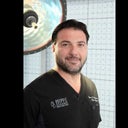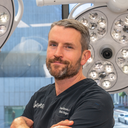Posted underBreast Implants q&a
Worried a 475 HP implant is going to be a bigger result than I want. I don’t want to have the “fake boob look”. (Photos)
I’m 5’9 140lbs with fairly wide shoulders. My current bra size is a 34B and I barely fill the cup. I felt fairly confident going with a 450 moderate profile but after another sizing appointment with a friend, I’ve switched to a 475HP which I’m now worried could be “too big”. The nurse at the appt has told me that sizers are going to show a bigger result than actual results after having the implants placed under the muscle. I’m so nervous I’m going too big?!
Answers (9)
From board-certified doctors and trusted medical professionals
Dr. Payman Danielpour, MD, FACS

Dr. Payman Danielpour, MD, FACS
Board Certified Plastic Surgeon
Answer
Dr. Urmen Desai, MD, MPH, FACS

Dr. Urmen Desai, MD, MPH, FACS
Board Certified Plastic Surgeon
Answer
Dr. Richard G. Reish, MD, FACS

Dr. Richard G. Reish, MD, FACS
Board Certified Plastic Surgeon
Answer
Dr. Donovan Rosas, MD

Dr. Donovan Rosas, MD
Board Certified Plastic Surgeon
Answer
Dr. Daniel Barrett, MD

Dr. Daniel Barrett, MD
Board Certified Plastic Surgeon
Answer
Dr. Johnson C. Lee, MD
Dr. Johnson C. Lee, MD
Board Certified Plastic Surgeon
Answer
Dr. Robert Singer, MD
Dr. Robert Singer, MD
Board Certified Plastic Surgeon
Answer
Dr. Tom J. Pousti, MD
Dr. Tom J. Pousti, MD
Board Certified Plastic Surgeon
Answer
More Breast Implants Questions
See all Breast Implants Q&AWE SEND PRETTY
EMAILS
What’s trending? Who’s turning heads? Which TikTok myths need busting? We’ve got you. No fluff, no gatekeeping—just real talk. Get our free, unfiltered newsletter.